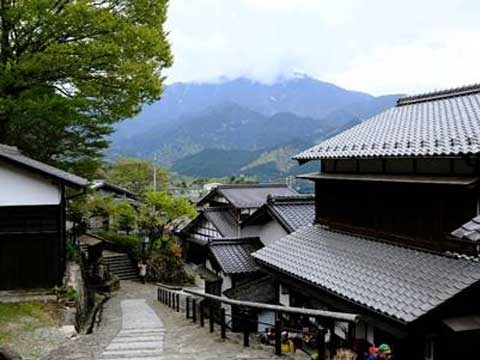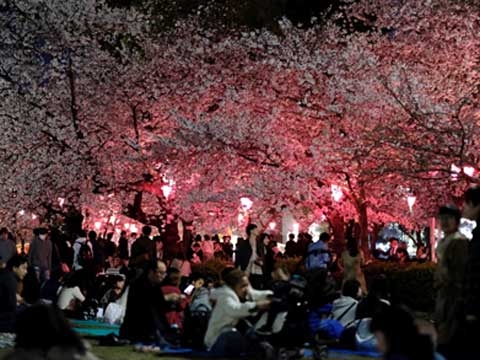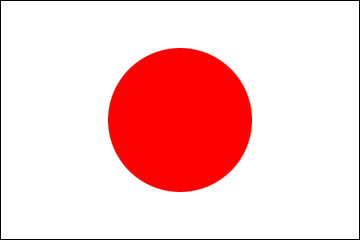Life Thus Far as an International Student in Nagoya
2020/1/22

By Benjamin Lee
Mr. Lee is a Japanese Government Research Scholar studying for a Master’s Degree in Systems Engineering at Nagoya University
My life took an unforeseen turn as I began my graduate studies… in Japan! I love traveling abroad but had never considered moving away from the San Francisco Bay Area. However, I am now experiencing life in Japan through the Japanese Government (MEXT) Scholarship. In this article, I will briefly explain how I ended up in Japan and touch upon some aspects of student life.
Prior to moving:
I had been seriously thinking of going back to school to pursue graduate studies, and was looking at some programs within California. However, I came across inspiration for studying in Japan in the last place I was expecting—Facebook! A post from the Consulate General of Japan in San Francisco’s Facebook page announced that the application period for the 2019 MEXT scholarship had begun. The article seemed too good to be true. The Japanese Government Scholarship provides financial support to foreign students to study in Japan, covering any institution and any degree within very reasonable guidelines. How competitive is this scholarship? What chance do I have at being granted admission to a university in Japan? It was a daunting task, but studying abroad in Japan was a dream in so many ways. After rounds of screening and months of suspense, my hard work paid off as I was selected as a recipient of the 2019 MEXT Scholarship.
Language:
As my grasp of the Japanese language during the time of applying was only basic, I searched for universities with programs taught in English. However, since I am now living in Japan, I really want to develop my proficiency in the language and learn about the local customs. Outside of my research and coursework, there is very little English used in daily life interactions. At first, I relied heavily on senior members of my research laboratory for help with applying for residency and signing up for a cellphone contract, among other administrative processes. Over time, I have become more comfortable with speaking and reading Japanese, but still require assistance for very particular challenges such as getting a better deal on an internet plan. I believe that if you live in a place that isn’t extremely popular with tourists (especially outside of Tokyo), you will need to speak more Japanese to get by.
Student Responsibilities:
It is typical for graduate students from outside of Japan to spend their first year in Japan as a “research student.” While receiving the MEXT scholarship may seem synonymous with being granted admission to a university, students still need to pass the university’s entrance exam to formerly enter a graduate degree program, which is a process unrelated to the scholarship. Thus, the majority of graduate students coming from abroad spend a semester or two to prepare for their exams as research students. In my case, my advisor had me take the entrance exam before moving to Japan. While I did pass the entrance exam prior to arrival, I was still under the research student status for the first semester. During that time, my responsibilities were to study Japanese and conduct research. After my research student period came to an end, I began my master’s program in October of 2019. The master’s course seems typical for a two-year program, with a variety of required lectures and seminars. Through talking with students from various research groups and majors, it seems the weight of responsibilities varies depending on the professors. In my case, research takes top priority over other coursework.
My Research Area:
I am enrolled in Nagoya University as a Mechanical Systems Engineering major under the Automotive Engineering program. Conducting research is one of my main responsibilities as a graduate student. I have two research projects based on two-phase heat transfer. My first area of research is in optimizing loop heat pipe performance to transport high heat fluxes over long distances, with various applications including automobiles and spacecraft. My second area of research is in ultra-thin vapor chambers used to remove heat from personal electronic devices. As mentioned previously, the weight of the research depends on the advising professor. In my lab, students work on their projects at least five days a week in order to meet rigorous deadlines. My projects will span the duration of my master’s degree, but promise to become more in-depth if I continue onto my doctor’s degree.
Activities:
Now, for the fun part! While being a student generally takes up one’s entire day from morning to evening, I have tried to make use of every weekend and holiday to make memorable experiences. This was much easier during the beginning, as everything was a new experience and there were many events coordinated by the university or other student groups for incoming students. The bulk of my experiences have been daytrips to destinations within one or two hours of Nagoya. Although there are definitely many weekends where I have had to stay in my lab to get work done, with 52 weekends in a year there’s enough time to take a trip once in a while to see new parts of the country. Some memorable trips I’ve taken were to Kiso Valley to take a walk through Nakasendo (a major route from the Edo period), Gero for their famous onsens (hot springs), and Kourankei to witness autumn foliage.
Mr. Lee is a Japanese Government Research Scholar studying for a Master’s Degree in Systems Engineering at Nagoya University
My life took an unforeseen turn as I began my graduate studies… in Japan! I love traveling abroad but had never considered moving away from the San Francisco Bay Area. However, I am now experiencing life in Japan through the Japanese Government (MEXT) Scholarship. In this article, I will briefly explain how I ended up in Japan and touch upon some aspects of student life.
Prior to moving:
I had been seriously thinking of going back to school to pursue graduate studies, and was looking at some programs within California. However, I came across inspiration for studying in Japan in the last place I was expecting—Facebook! A post from the Consulate General of Japan in San Francisco’s Facebook page announced that the application period for the 2019 MEXT scholarship had begun. The article seemed too good to be true. The Japanese Government Scholarship provides financial support to foreign students to study in Japan, covering any institution and any degree within very reasonable guidelines. How competitive is this scholarship? What chance do I have at being granted admission to a university in Japan? It was a daunting task, but studying abroad in Japan was a dream in so many ways. After rounds of screening and months of suspense, my hard work paid off as I was selected as a recipient of the 2019 MEXT Scholarship.
Language:
As my grasp of the Japanese language during the time of applying was only basic, I searched for universities with programs taught in English. However, since I am now living in Japan, I really want to develop my proficiency in the language and learn about the local customs. Outside of my research and coursework, there is very little English used in daily life interactions. At first, I relied heavily on senior members of my research laboratory for help with applying for residency and signing up for a cellphone contract, among other administrative processes. Over time, I have become more comfortable with speaking and reading Japanese, but still require assistance for very particular challenges such as getting a better deal on an internet plan. I believe that if you live in a place that isn’t extremely popular with tourists (especially outside of Tokyo), you will need to speak more Japanese to get by.
Student Responsibilities:
It is typical for graduate students from outside of Japan to spend their first year in Japan as a “research student.” While receiving the MEXT scholarship may seem synonymous with being granted admission to a university, students still need to pass the university’s entrance exam to formerly enter a graduate degree program, which is a process unrelated to the scholarship. Thus, the majority of graduate students coming from abroad spend a semester or two to prepare for their exams as research students. In my case, my advisor had me take the entrance exam before moving to Japan. While I did pass the entrance exam prior to arrival, I was still under the research student status for the first semester. During that time, my responsibilities were to study Japanese and conduct research. After my research student period came to an end, I began my master’s program in October of 2019. The master’s course seems typical for a two-year program, with a variety of required lectures and seminars. Through talking with students from various research groups and majors, it seems the weight of responsibilities varies depending on the professors. In my case, research takes top priority over other coursework.
My Research Area:
I am enrolled in Nagoya University as a Mechanical Systems Engineering major under the Automotive Engineering program. Conducting research is one of my main responsibilities as a graduate student. I have two research projects based on two-phase heat transfer. My first area of research is in optimizing loop heat pipe performance to transport high heat fluxes over long distances, with various applications including automobiles and spacecraft. My second area of research is in ultra-thin vapor chambers used to remove heat from personal electronic devices. As mentioned previously, the weight of the research depends on the advising professor. In my lab, students work on their projects at least five days a week in order to meet rigorous deadlines. My projects will span the duration of my master’s degree, but promise to become more in-depth if I continue onto my doctor’s degree.
Activities:
Now, for the fun part! While being a student generally takes up one’s entire day from morning to evening, I have tried to make use of every weekend and holiday to make memorable experiences. This was much easier during the beginning, as everything was a new experience and there were many events coordinated by the university or other student groups for incoming students. The bulk of my experiences have been daytrips to destinations within one or two hours of Nagoya. Although there are definitely many weekends where I have had to stay in my lab to get work done, with 52 weekends in a year there’s enough time to take a trip once in a while to see new parts of the country. Some memorable trips I’ve taken were to Kiso Valley to take a walk through Nakasendo (a major route from the Edo period), Gero for their famous onsens (hot springs), and Kourankei to witness autumn foliage.

Akin to these trips, I have had the pleasure of participating in a couple of host family programs outside of Nagoya. A major event that takes place annually is the “Japan Tent” program hosted by the Ishikawa prefecture’s government. During this program, approximately 300 international students are hosted by various families for a week in the summer. It is a very generous program based upon culture exchange as well as sharing a taste of life outside of the big cities. The students are divided amongst 19 participating cities in Ishikawa prefecture for the first three nights, with a majority of those being places the typical international student hadn’t heard of, and much less populated. In my case, I had a wonderful time in Hakusan city. For the remainder of the trip, the students are moved to various host families inside Kawazawa city, and where the days are spent at hands-on workshops organized by the government to showcase some of the crafts Kanazawa is known for.

Without straying too far from Nagoya, there seem to be events throughout the year for every season. During the spring, there are many locations for hanami (outdoor parties or gatherings to enjoy the cherry blossoms). In early summer, fireflies can be seen and people will stay out until late at night in places you wouldn’t think of going to usually (i.e. dark forest at night). In the summer, frequent trips to the beach and barbeque sites are taken, where the barbeque differs greatly from an American barbeque. While summer is considered to be the most brutal season by most, there are many festivals to look forward to where many people dress up in yukata to view fireworks and take a stroll. In autumn, people again venture out to see the scenery as leaves change to warm hues. Winter is a little cozier as the temperature drops and people are more reluctant to leave home, but ski trips are popular.
My workload has increased significantly with the transition from research student to a master’s student, but I still try to find time to indulge in experiences unique to Japan.
Closing:
While I’ve only been in Japan for 8 months, the reverse can also be said: I’ve been in Japan for 8 months already! Although it may be possible to continue onto the doctorate program or find employment in Japan after graduation, who knows what the future may hold (I certainly don’t)! As my current timeline in Japan is for two and a half years, I want to make the most of my time here. I hope this article was able to shed some light on the experiences of a new student in Japan.
Closing:
While I’ve only been in Japan for 8 months, the reverse can also be said: I’ve been in Japan for 8 months already! Although it may be possible to continue onto the doctorate program or find employment in Japan after graduation, who knows what the future may hold (I certainly don’t)! As my current timeline in Japan is for two and a half years, I want to make the most of my time here. I hope this article was able to shed some light on the experiences of a new student in Japan.
